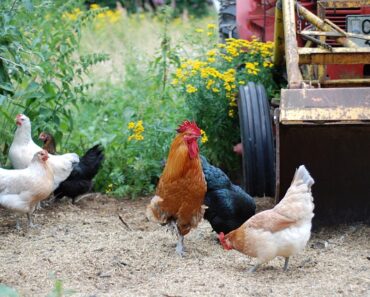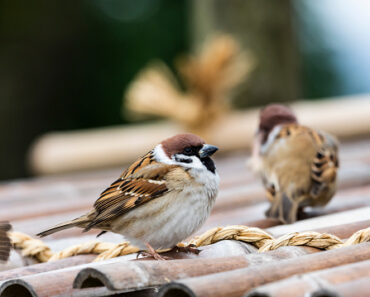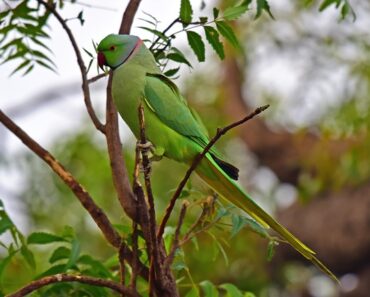
When you have a bird at home, or even a couple, whatever the type of bird, it is essential to take good care of it and to offer it all the well-being necessary for its development, taking into account the specificity of its species.
And for this, the habitat is a very important component: the choice of the cage will become essential. It will depend on the species of the bird, the number of birds held because too many individuals may be the source of various diseases.
It is therefore a choice that must be carefully considered before the acquisition and adoption of birds because a cage that is too small will quickly suffocate a bird that is growing quickly or that needs to develop its wings often to fly.
It is possible to acquire a cage for your bird either by buying a new one or by taking a second hand one: whatever happens, in both cases, it is preferable to clean the cage and rinse it well so that the bird does not suffer from breathing and/or eating cleaning products.
Once the cage is dry, it may be decided to incorporate accessories such as branches, a feeder, a watering trough, etc.
But why take a cage? It allows, especially in the early stages, to raise the bird in good conditions without stress. Moreover, many birds do not like solitude and when they are acquired by two, in couple, it is preferable that they are together.
The cage is very suitable for birds, especially for canaries, parakeets, inseparable birds, etc., but care must be taken with the type of cage. In case of doubt? or if you have any questions about the birds’ habitat, it is highly recommended to contact a specialized store or to consult a website that deals exclusively with this. The professionals who will answer will be able to advise and direct towards which type of cage according to the species of the bird.
Which dimensions, which size for a birdcage?
In a first step, and if it is feasible, it is preferable to take a large cage and if possible, a cage more in length than in height (a bird usually flies horizontally): indeed, the bird that is in captivity will need space to fly, to feel safe and healthy.
Moreover, it is likely to spend most of its time in the same cage, so you might as well choose a comfortable, spacious and cosy habitat. While a large bird could not live in a small cage for fear of panicking and suffocating, a small bird would quickly feel lost in the middle of all this space in front of it.
Roughly speaking, here are some dimensions to consider, especially for canaries and parakeets :
. for a canary alone: cage of 40 x 20 x 30 cm
. for a couple of canaries : cage of 60 x 40 x 50 cm
. for an inseparable: 30 x 40 x 50 cm cage
. for a parrot: cage of 50 x 70 x 70 cm
. for a couple of parakeets (small size): cage of 40 x 40 x 45 cm
. for a couple of parakeets (large size): cage of 150 x 50 x 60 cm.
It should not be forgotten that birds, especially parakeets and parrots, like to climb, hence the need to have a high cage. Birds of the passerine type will prefer long cages to fly quietly.
Choosing the cage model for your bird
There are a few criteria to follow to choose the ideal cage for your bird (or birds).
First of all, the shape of the cage must be well thought out and it is especially in pet stores that you will find a greater number of cages with different shapes. It is necessary to think above all about the needs of the bird and not to be lured by the different decorations and accessories. We prefer a rectangular or square cage rather than a round or pointed cage.
Also, the choice of doors can be interesting to consider. They must allow quick and easy access to the interior of the cage to catch the bird. Its size must be large enough for a man’s hand to enter it. The closing system must be faultless and the bird (especially parrots) must not be able to reach it or open it with its beak.
The bars that surround the cage are not the same according to the species of bird: in fact, parrots and parakeets will prefer vertical bars without taking the risk of getting injured while other species will not care. The space between each bar or the size of the mesh must not offer the bird the possibility to run away, to pass its head outside without taking the risk of a possible accident. The diameter of the bars of a birdcage depends on the size of the bird’s legs, that is why smooth bars are preferred over grooved bars which can injure the bird’s legs.
Finally, the type of cage, as we have seen, is essential for the good development of the bird: in addition to what has been previously mentioned, a metal cage with a removable bottom is also needed for easy maintenance and cleaning.
The ideal location of a bird cage – so that the bird is at its best, so that it does not suffer from cold, humidity, heat, drafts and especially so that the bird does not get bored (it generally loves to watch and contemplate what is going on around it) – is a room where its masters are more often present. One should also make sure that the bird is not exposed to direct sunlight because the cage would quickly become a furnace. Finally, the cage should not be placed near the kitchen because the smells emanating from it can inconvenience (or irritate) the bird.
The cage should also be protected from outside noise, especially from high-pitched sounds such as TV or radio: the bird is a fairly stressed animal by nature and should be given the impression that it can control its environment.
The cage will also be placed high up so as not to be disturbed by children and possible pets.
What accessories for a birdcage?
A bird needs to be able to walk, climb, fly, crawl, but also to eat, drink, wash and play like everyone else. This is why accessories are essential for its good development.
bird game board
To start, you must take a perch because birds perch naturally. Fixed perches play a role during the breeding period, while mobiles allow for play and swinging. The diameter of the perch depends on the size of the bird’s legs, because if it is badly adapted, the bird could develop joint diseases and it would become extremely painful for him. For canaries, for example, a perch of 1 cm is sufficient while for a parakeet, the perch can be 3 to 4 cm. There is a wide variety of perches that reproduce the natural space.
Then comes the nest which is essential for its rest and reproduction. It is a shelter for the bird but it is necessary to inquire beforehand because certain species of birds use a nest only during their breeding period and never otherwise. It is advisable to find a small nest that closely resembles the one used by the bird in its natural environment: for canaries, it can be a small basket, a large box for parakeets.
A bathtub: it may seem strange but birds like to wash and refresh themselves, especially in fresh and clean water. The bathtub should be in the cage only for short moments and cleaned every day.
Toys can be added to the cage but it is important to limit their number for fear of cluttering up the space for the birds, especially their flight perimeter. Each species has its own favorite toy but you can count on a ladder, a bell, ropes, a small swing, horizontal bars.
The bird’s cage must of course be cleaned and maintained very often: if possible, the bottom of the cage can be removable but also, it must be separated by a grid from the bottom of the cage itself to prevent the bird from stepping on its own droppings. The bottom of the cage will then be lined with absorbent litter such as sand or clay. Under no circumstances should paper or sawdust be used that could injure the bird.






